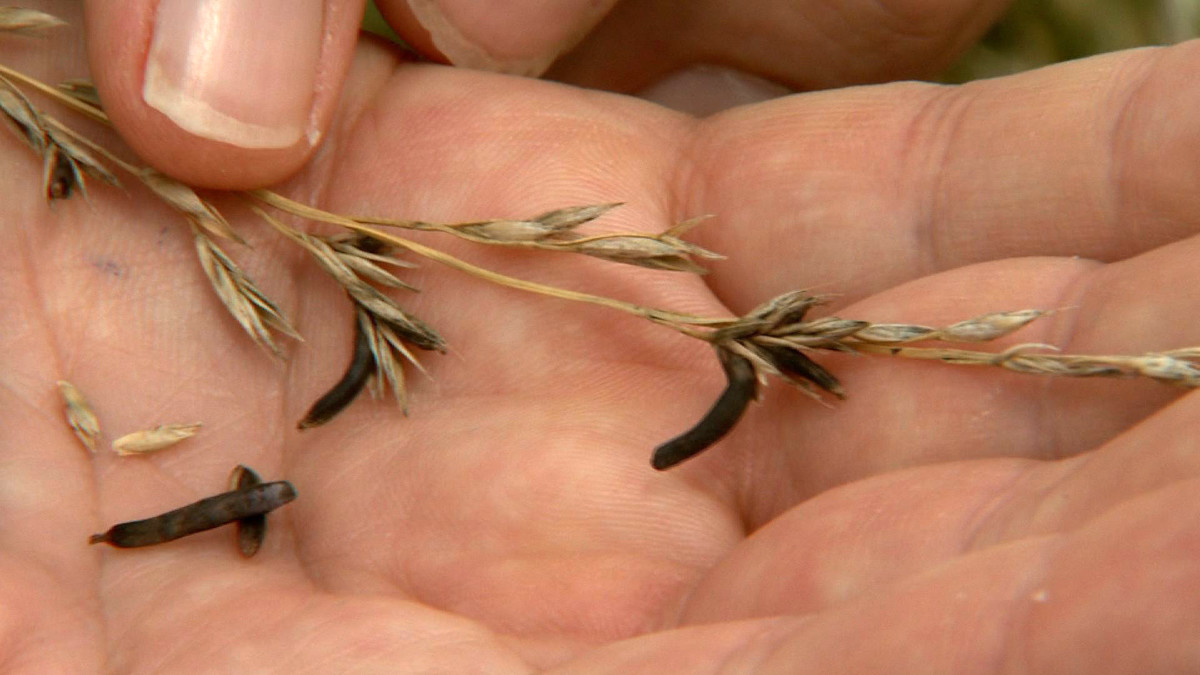Fungus outbreak lethal for NZ dairy cows

Over 100 dairy cows in New Zealand had to be put down as they had digested a fungus from their feed supply.
The cows were suffering from ergot toxicity in the Southland and Otago regions following a dry summer and wet autumn, ideal conditions for the fungus to spread.
Toxic compounds affects cow health
Ergot is a naturally occurring fungus which is most commonly found in grains and grasses. In the most severe cases it can lead to gangrene and death after entering the blood of humans or animals. The ergot fungus grows on the seed head of cereal grains and grasses, with rye being the most commonly affected but wheat, barley and oats are also targets for it.
All animals are susceptible to ergot but cattle are often the most affected. The fungus produces toxic compounds called ergot alkaloids which are vaso-active causing severe vasoconstriction of small arteries.
Some cattle suffering from the fungus have been seen to lose the tips of their ears and their tails, but feet and legs can also be affected. In the most severe cases the animals can lose their hooves but mostly the fungus causes lameness and swelling of the fetlocks and hock joints. Cattle will commonly develop a rough hair coat, lose weight and have extended periods of time standing in water or shade if available.

Mycotoxins can have a huge effect on the health and productivity of livestock – check out this informative feature.
Dry summer and wet autumn
Four cases of ergot toxicity were initially reported in Southland and South Otago which had affected a large number of cows, according to VetSouth Winton veterinarian Hayden Dore.
The vet said the dry summer and wet autumn conditions contributed to the appearance of the fungus in the region, with many of the cases he had seen affecting the hind limbs of cows. “Over time it effectively causes one or more of the limbs to become gangrenous,” Mr Dore said. “Signs of ergot toxicity generally started with a disinterest in feed, before moving to lameness in the limbs, which presented similarly to foot rot, but without the separation of the toes. “Once the limbs go cold from lack of blood supply, it would take about a week before the limbs began to fall off,” he added. One herd with 900 milking cows had around 130 cows infected by the poisonous fungus with subsequently 61 of them being put down.
Another herd with 400 cows saw 41 of them being euthanised after 56 were found infected.
Although the fungus has been around for thousands of years, it is most active when the environmental conditions are right, which in New Zealand has meant it is spreading fast.
Some animals can recover from infection but once the limbs go cold then recovery is not possible.
Prevention of spore spreading
Ergot spores are spread by the wind and to prevent ergotism, it is key to prevent the fungus from growing, hence preventing the formation of toxins. Ryegrass infected with ergot can be identified by the presence of ergot bodies which are long purple to black structures in place where seeds should be. Farmers who find these spores in their feed supply are being advised to bury it over four centimetres deep in the ground which suppresses the spores and prevents them from spreading. Some tests are available on the market to test for ergot alkaloids in certain raw materials, and a farmer can also choose to use a mycotoxin binder in the feed of the animals.











